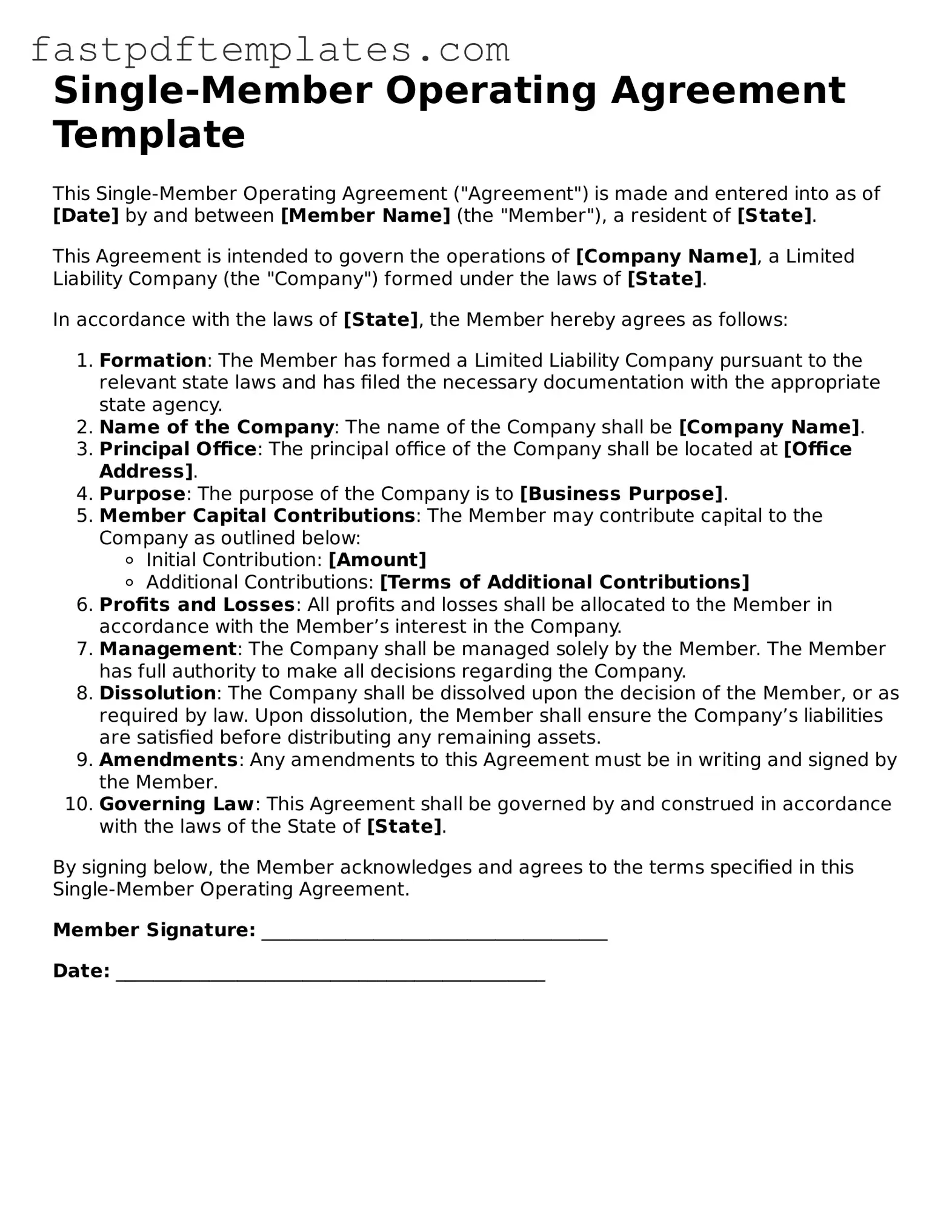Single-Member Operating Agreement Template
This Single-Member Operating Agreement ("Agreement") is made and entered into as of [Date] by and between [Member Name] (the "Member"), a resident of [State].
This Agreement is intended to govern the operations of [Company Name], a Limited Liability Company (the "Company") formed under the laws of [State].
In accordance with the laws of [State], the Member hereby agrees as follows:
- Formation: The Member has formed a Limited Liability Company pursuant to the relevant state laws and has filed the necessary documentation with the appropriate state agency.
- Name of the Company: The name of the Company shall be [Company Name].
- Principal Office: The principal office of the Company shall be located at [Office Address].
- Purpose: The purpose of the Company is to [Business Purpose].
- Member Capital Contributions: The Member may contribute capital to the Company as outlined below:
- Initial Contribution: [Amount]
- Additional Contributions: [Terms of Additional Contributions]
- Profits and Losses: All profits and losses shall be allocated to the Member in accordance with the Member’s interest in the Company.
- Management: The Company shall be managed solely by the Member. The Member has full authority to make all decisions regarding the Company.
- Dissolution: The Company shall be dissolved upon the decision of the Member, or as required by law. Upon dissolution, the Member shall ensure the Company’s liabilities are satisfied before distributing any remaining assets.
- Amendments: Any amendments to this Agreement must be in writing and signed by the Member.
- Governing Law: This Agreement shall be governed by and construed in accordance with the laws of the State of [State].
By signing below, the Member acknowledges and agrees to the terms specified in this Single-Member Operating Agreement.
Member Signature: _____________________________________
Date: ______________________________________________
